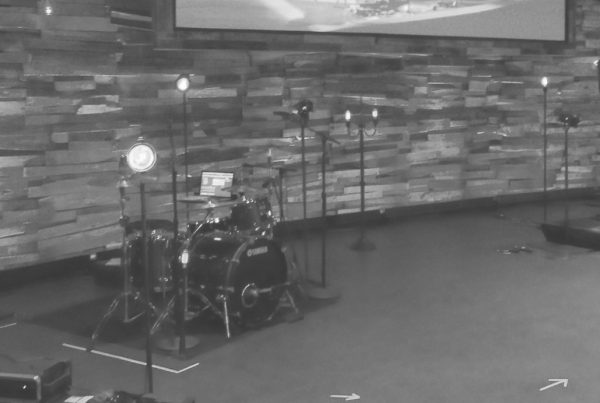
Running a creative meeting can be one of the hardest things you do in a week. It comes with so much pressure to produce, perfect, and out-perform previous elements and ideas. Not to mention the increasing weight of constant comparison we all feel as we scroll through our Instagram feed; seeing all the other amazing ideas everyone else seems to have, but for some reason has completely eluded you and your team.
Be encouraged, you’re not alone.
These are real feelings, but they are just that: feelings. The reality is we are all given the same potential, power, and possibility (this post is brought to you by the letter “P”) to tap into the ultimate Creator and giver of good things. The difference isn’t in the ideation process but in the development and implementation process.
Good ideas are useless if they aren’t put into action.
The teams that are able to effectively execute their ideas are the teams that take new ground. And in most cases, these ideas aren’t unique to them – they have simply been taken, adapted, and tweaked to better serve their environment. But they have successfully mastered the process of developing the idea from a concept to creation.
Here are five essential meeting elements you can implement today that will help you move your creative concepts into completed creations.
Step 1: Brain-Dump
The first step to every creative meeting is a short, but effective brain-dump. This is where all the ideas, concepts, and optimistic dreams are presented to the team for conversation and consideration. Essentially, this is the pitch portion where you show and tell your pre-thought-out ideas to the team.
It is important to note this is not a brainstorming session – which most teams turn this into and then get stuck before they start.
A brainstorming session is something different – a meeting of its own right and purpose that starts with a blank whiteboard in search of a specific solution for the desired outcome. It usually wades you through the wild, ridiculous, and seemingly impossible solutions in hopes that one idea will trigger the X that marks the spot, resembling an adventurous treasure hunt.
For a successful creative meeting to gain some traction out of the gates, this has to happen individually; each person in the room must be committed to gathering, harvesting, and exploring plausible ideas before the meeting or you are dead in the water before you even begin. Next time, try using a series brief to begin the conversation.
Step 2: Filter
Once all the ideas are presented, shown, and briefly discussed to gain better clarity, they need to be filtered through the missional objective. Simply asking the question, which idea(s) will lead people closer towards our desired outcome? Not whose idea.
Other questions you can use as a filter would be: Which ideas are competing? Which ideas are awesome, but just not for this moment, service, or event? Which ideas of plausible and doable within our allotted time and resources? Which ideas can be retooled, reworked, and reintroduced in another meeting? Which ideas can be cut and set free completely?
It’s important to remember that emotions and personal preferences will present themselves in this part of the meeting. I’ve seen it happen far too many times. It is the responsibility of each person in the room to protect their response in order to keep the meeting moving forward.
Think of your emotions and your preferences like two grenades in your hands. At any time – especially in a creative meeting among artists, creatives, and leaders – you can choose to drop one, which will effectively blow up the meeting. When that happens all vulnerability, trust, and willingness to explore new ideas is sucked out of the room; leaving you with the status quo of regurgitated ideas and lifeless elements.
Think of your emotions and your preferences like two grenades in your hands. At any time you can choose to drop one, which will effectively blow up the meeting. Click To Tweet
Hold all your ideas loosely, and let the best idea(s) win. Remember, if you’re in a church environment you have 51 other Sundays in a year to plan. Save them. Write them down. There is lots of room for ideas to be explored and developed later on.
Step 3: Explore
This is the part of the meeting that should take the most time. It’s the part that allows you to explore and examine different ways you can execute the creative ideas; essentially figuring out how you are going to do this.
It’s where you hold all your ideas up to your current resources, teams, and environments, all the while working together to find creative solutions that rally your team and connect all the elements together into a seamless experience.
If you’re a community creative, meaning your creativity comes alive in conversations with other creatives, your ideas will begin to compound, morph, and spring up new ideas, potentially taking you on bunny trails which may pull you off course completely. Be cautious about this trap and appoint someone in the room with the responsibility of recognizing the diversion and setting the room back into focus.
Step 4: Delegate
Once all the ideas have been explored and the solutions presented. It is critical that all pieces of the project are picked up and owned by someone in the room. While there will be natural pieces that are obvious for people to own, there will be others that really don’t fit into anyone’s specific realm.
It is vital that each piece is owned by a person and is assigned a due date for completion.
I’m going to say that again because assumption is the death to the success of any creative meeting. It is vital that each piece is owned by a person and is assigned a due date for completion.
There are many project management solutions you and your team can use during this process (Asana, Basecamp, Flow, Monday, MeisterTask, Trello), each one with its own pros and cons. But what I have found is that the best system for project management isn’t the most expensive, but the one that is mostly used. So whatever you decided on, it needs to be used by EVERYONE on your team. Everyone.
Step 5: Produce
Now it’s to make it happen. Appoint someone to manage the project, to keep people to task, and to keep the lines of communication open after the meeting. We all know that things change, shift, morph, and adapt – it’s a natural part of the creative process – just don’t do it in isolation.
Invite feedback early and often. This keeps you moving forward as a team but also safeguards the trap of spending hours on a project only to find it’s not hitting the mark or desired intent. That is when feelings get hurt and you’re pressured to still move forward with it, even though it doesn’t fit anymore.
The more people you have around the table, the more communication you need beyond the table. The creative meeting isn’t the final discussion, it’s the starting point that sets the team in a unified direction.
The more people you have around the table, the more communication you need beyond the table. Click To Tweet
Running a creative meeting can be overwhelming at times, but there are ways to get ahead of it so it doesn’t become the meeting the wastes your time. Begin to implement some of these strategies and see if they help move your creative ideas to completed creations.





